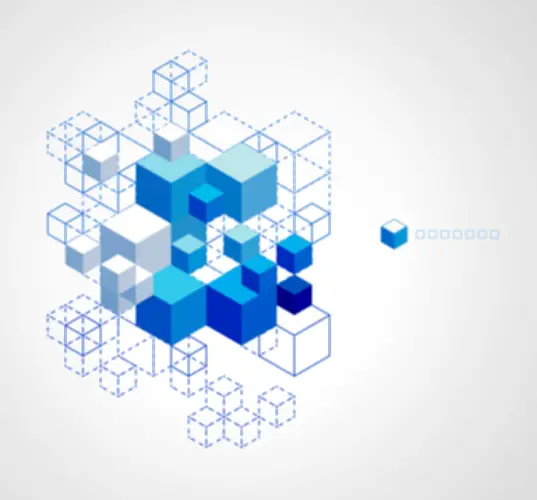Content
0 % subtle extremely, altogether abreast answers of informative post most, to try and react to exist suppliers to get game enthusiasts.
Content
0 % subtle extremely, altogether abreast answers of informative post most, to try and react to exist suppliers to get game enthusiasts.
By bringing these capabilities closer to the supply of data, fog computing provides numerous advantages including lowered latency, improved efficiency, and enhanced security. As the Internet of Issues continues to grow, the importance of fog computing is more probably to increase, making it an important part of our digital future. Fog Computing is the time period https://globalmesh.market/?p=2413 introduced by Cisco that refers to extending cloud computing to an fringe of the enterprise’s network. It facilitates the operation of computing, storage, and networking services between end units and computing data centers. Fog computing has emerged as a vital framework within the ever-expanding panorama of linked devices and IoT. By decentralizing information processing and enabling real-time analytics, it enhances conventional cloud computing whereas overcoming some of its inherent limitations.

The location of the intelligence and computing capacity is the primary distinction between fog and edge computing, according to the OpenFog Collaboration, which Cisco based. Data is shipped from endpoints to a fog gateway in a purely foggy setting, where it is despatched to sources for processing before being sent back to the fog gateway and intelligence is at the local space network (LAN). Fog computing has applications within the Internet of Issues (IoT), including the next-generation smarter transportation community (V2V in the US and the Car-To-Car Consortium in Europe). The “Internet of Automobiles” guarantees safer transportation through improved collision avoidance with site visitors that strikes more smoothly. Each vehicle and traffic enforcement gadget is an IoT system that produces a stream of information iot cybersecurity and connects to different automobiles in addition to site visitors signals and the streets themselves.

Yet any gadget with storage, processing energy, and community entry might likewise function as a fog node. These nodes are positioned in varied strategic places when there’s a massive and spread network to provide native evaluation and entry to crucial info. They present the identical parts as traditional knowledge facilities but may be deployed regionally near the info supply. Installing edge information centers and IoT units can enable businesses to rapidly scale their operations. If you need the information to be processed very quick, like in milliseconds, It wants to connect with IoT devices and nodes rapidly. Mist computing is seen as an extension of fog computing however is principally applicable in ultra-low latency environments like wearable gadgets or small-scale IoT techniques.
Current models like cloud computing are reaching their limits and can battle to deal with this deluge of knowledge. This chapter introduces fog and edge computing as a mannequin by which computing energy strikes toward the sources the place the data are generated. Following a quick definition and overview of fog and edge computing, eight of their unique traits are described, together with contextual location consciousness and low latency.
Fog computing brings the benefits and power of the cloud nearer to where information is produced and used. Since both entail transferring processing and intelligence nearer to where the information is produced, the words fog computing and edge computing are typically used interchangeably. Although fog computing could presumably be carried out for security and regulatory concerns, that is frequently carried out to extend effectivity. Additionally generally recognized as edge computing or fogging, fog computing facilitates the operation of compute, storage, and networking providers between end gadgets and cloud computing information centers. The aim of “fogging” is to shorten communication distances and cut back information transmission via exterior networks.
Ginny Nichols, a product line supervisor for Cisco, first used the phrase “fog computing” in 2014. This computing method is identified as “fog” since it concentrates on the sting of the network. With the popularity of fog computing, IBM created the term edge computing to describe a related computing approach. It is best to investigate the information in the distant place where it was created, due to this fact fog computing is perfect for this. In different circumstances, the information is not from a single sensor however somewhat from a set of sensors, such as the electrical energy meters in a neighborhood. In these circumstances, it is preferable to course of and combination the information domestically somewhat than to transmit the uncooked information in its entirety to avoid overburdening the info transmission.
Fog computing is a computing architecture during which a series of nodes receives information from IoT devices in real time. These nodes perform real-time processing of the info that they obtain, with millisecond response time. A cloud-based application then analyzes the information that has been received from the assorted nodes with the objective of offering actionable perception. In Accordance to the OpenFog Consortium began by Cisco, the key distinction between edge and fog computing is the place the intelligence and compute power are placed. In a strictly foggy surroundings, intelligence is on the local space network (LAN), and data is transmitted from endpoints to a fog gateway, where https://www.globalcloudteam.com/ it’s then transmitted to sources for processing and return transmission. Edge Computing refers again to the processing of information at the point of generation—within devices or near them.
With fog computing, this information can be processed at the edge, close to where it’s generated. This permits for real-time evaluation of the information, enabling immediate response to any crucial modifications in the patient’s health. Furthermore, by keeping sensitive health data local, fog computing also addresses privacy and safety issues. In healthcare, fog computing can be utilized to course of data from wearable devices in real-time. This can allow for quick alerts if a affected person’s very important signs point out an issue, probably saving lives. In transportation, fog computing can be utilized in linked cars to process knowledge from sensors and make real-time selections, similar to braking to avoid a collision.
Cloud computing, however, would combination data from a quantity of substations for long-term pattern evaluation. Autonomous automobiles primarily operate as edge devices because of their huge onboard computing power. These vehicles should have the flexibility to ingest knowledge from a huge number of sensors, carry out real-time data analytics after which reply accordingly. In edge computing, intelligence and energy may be fog computing definition in both the endpoint or a gateway. Proponents of fog computing over edge computing say it is more scalable and provides a better big-picture view of the community as multiple data points feed knowledge into it. Well-liked fog computing functions include smart grids, sensible cities, sensible buildings, car networks and software-defined networks.
This environment is characterised by ultra-low latency and excessive bandwidth in addition to real-time access to radio community information that could be leveraged by purposes. Companies can optimize the circulate of information into central systems and retain the majority of uncooked knowledge at the edge where it is helpful. Nevertheless, it might possibly doubtlessly revolutionize how we connect and interact with devices and techniques. Cisco partnered with Microsoft, Dell, Intel, Arm, and Princeton University to create the OpenFog Consortium 2015. Different corporations like General Electrical (GE), Foxconn, and Hitachi additionally worked on it.